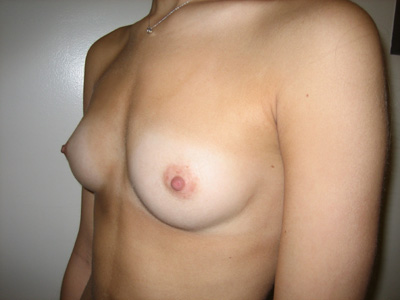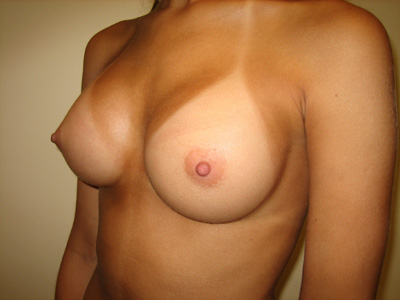
Breast augmentation remains the most popular cosmetic plastic surgical procedure performed, with nearly 300,000 women undergoing breast augmentations in the United States in 2013, according to the American Society of Plastic Surgeons.
Breast augmentation procedures have continued to grow in popularity, and are up 37% since 2000. In my own practice, breast augmentation is very popular among women in their 20’s looking for an increase in their breast cup size, and women after pregnancies looking to restore or enhance their pre-pregnancy breast size. With a very high patient satisfaction rate, women report a substantial increase in self-confidence and self-esteem after breast augmentation.
The first breast augmentation procedures using implants were performed in 1962, using a first generation silicone gel implant. In 1964 the saline breast implant was developed. Since that time, there have been many innovations in both silicone and saline implants. In 1992, there were reports of excessive complications with silicone implants, including rupture- related issues and a possible link to connective tissue diseases. These safety concerns led the FDA to remove silicone gel implants from the market pending further studies, leaving only saline implants available for most women desiring breast augmentation. Subsequent studies, however, showed no link between silicone gel implants and connective tissue diseases such as lupus and arthritis.
Nevertheless, the implant manufacturers redesigned their silicone gel implants, improving the silicone to be more cohesive, or “gummy bear-like,” and thus much less prone to leakage or rupture. In 1998, the FDA approved these new silicone implants, primarily for breast reconstruction. Based on satisfactory safety studies, the FDA then approved these new silicone gel implants for breast augmentation procedures in 2006. Currently, both saline and silicone gel implants are available for women desiring breast augmentation.
Saline implants are filled with sterile salt water, and are FDA- approved for breast augmentation in women at least 18 years of age. Should the implant leak, the saline implant will deflate and a decrease in breast size will be obvious. Your body will absorb the salt water and it is not dangerous. Even tiny pinhole-size tears could make the implant leak. Replacing the implant is generally straightforward, with removing the deflated implant and replacing it with a new implant. Overall, saline implant leakage rates are small, with 3-year leakage rates in the 3-5% range, and 10 year leakage rates in the 7-10% range.
Silicone implants are filled with silicone gel, and are FDA- approved for breast augmentation in women at least 22 years of age. This gel feels a bit more like natural breast tissue. Because the gel is cohesive, or somewhat “gummy bear-like,” leakage rates are quite low, with 6 -year leakage rates reported in the 1% range. Since most silicone implant leaks are small, often with just a small bubbling out of the silicone, leaks generally do not change the appearance of the breast and are difficult to detect by physical exam. The MRI has been shown to be one of the better tests to detect silicone implant leaks. For this reason, the FDA has recommended an MRI test at 3 years after silicone implant breast augmentation, and then every 2 years afterwards. However, since MRI exams are only 86% accurate in detecting leaks, and may suggest a leak when there is none, many women choose to forego the recommended MRI exams unless a problem is noticed. Recent studies have indicated that a special high resolution ultrasound exam may also be accurate in detecting silicone implant leaks. If a silicone implant leak is diagnosed, the implant and any leaking silicone needs to be removed, often with some of the capsule tissue around the implant, and a new implant is placed.
In general, the look of breasts with either saline or silicone breast implants is similar, with both implant types able to result in an aesthetically pleasing breast augmentation. A potential disadvantage of saline implants compared to silicone gel implants, however, is that rippling of the implant is more likely to be felt (but generally not seen), particularly at the bottom or side of the breast. This is more likely to happen in women with very thin breast tissue. Even though implants are usually placed under the muscle behind the breast, at the bottom of the breast there could be less tissue overlying the implant. Silicone implants are less likely to exhibit this potential for rippling, however, and may have a somewhat more natural feel. Primarily for this reason, 72% of women having breast augmentation in 2013 chose silicone gel implants, whereas 28% chose saline implants.
During consultations with my breast augmentation patients, I discuss in detail the issues related to silicone and saline implants. Even though the safety of silicone implants is well-established, some patients feel safer with saline implants, with regards to leakage concerns as well as not needing to monitor the implants through MRI testing. For these patients, saline implants could be a good choice, especially for the patients who don’t mind the potential for possibly feeling the implant. For other patients who want as smooth and natural feel as possible, silicone gel implants could be a good option. Ultimately, the decision between silicone and saline lies with the patient. Either implant, however, can achieve a beautifully proportioned breast augmentation with very high patient satisfaction.
Dr. Arnold Breitbart is a board-certified plastic surgeon, certified by the American Board of Plastic Surgery, and specializes in cosmetic surgery of the body, breast, and face. He has practices in both Manhasset and Manhattan. For more information, call Dr. Breitbart's offices at 516-365-3511.

